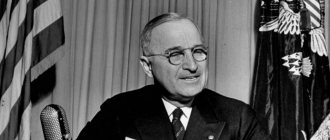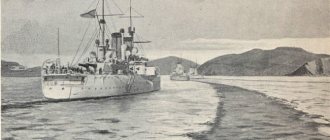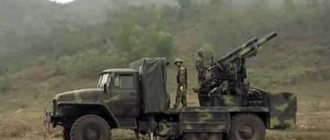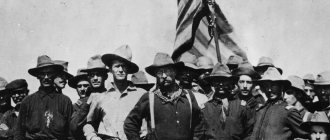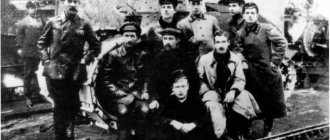Vietnam after the war
In 1974, the Vietnam War ended. The armed forces of a small Asian country managed to defeat the army of an all-powerful overseas rival. Naturally, the United States used only a small part of its combat power in that war, and behind Vietnam stood powerful allies - China and the USSR, but this did not change the essence.
Vietnam emerged from the war with a trained army with good combat experience, and its political leadership was convinced of the correctness of the chosen course. But not everyone liked this situation, and first of all yesterday’s ally, China.
Strengthening popular sentiment, self-confidence supported by army bayonets, all this served as an excellent launching pad for the very ambitious plans of the Vietnamese communists. They were no longer satisfied with the role of the periphery of Southeast Asia, and they seriously talked about unifying the region into a single Indo-Chinese communist state. In other words, they propagated the same “world revolution” according to Lenin, but in a separate region. China, which saw itself as a key regional player, expectedly did not like this idea.
However, China would not attack Vietnam without any special reason - to present itself as an aggressor in the eyes of the public, and even knowing about the USSR’s interest in Vietnam, all this would be too imprudent. But it was impossible to stay away.
A solution was found - in order to prevent the strengthening of Vietnam, China began to supply weapons to neighboring Kampuchea (Cambodia), which had long-standing problems with Vietnam. Having well-armed (and not at all peaceful) neighbors - Kampuchea in the west and China in the north, Vietnam would be in a vice and would not pose a threat. And along with him, the USSR did not pose a threat...
Vietnamese soldier firing
Hidden participation
Initially, money and resources came from China. But Vietnam's complicated history with China's attempts to dominate the country eventually led them to turn to the Soviet Union for help.
This help came in several forms. But overall it was very similar to the assistance that the United States later provided to the Mujahideen. Fought the Soviet Union in Afghanistan in the 1980s.
We also recommend reading: The untold truth about Al Capone. Facts about the legend of the criminal world.
Like the United States in Afghanistan, the USSR sent money, weapons and military advisers to Vietnam. Just like the US in Afghanistan. These so-called advisors often took on a much more active role. What their name suggested. However, the active combat role of the USSR is not even remotely comparable to the participation of the United States.
It was acknowledged that approximately 3,000 Soviet soldiers served in North Vietnam during the war. Although they were designated as Soviet “military experts”. Which allowed the USSR to claim that Soviet “soldiers” did not participate in the war. Of these 3,000 people, 16 died during the conflict.
By comparison, more than 2.7 million Americans served during the Vietnam War. And more than 58,000 American soldiers died. Compared to this, the participation of the Soviet Union was clearly insignificant, but it did exist.
USSR and Vietnam
And here we come to one of the main reasons for the confrontation between China and Vietnam. The fact is that the USSR and China, despite joint actions in the last war (Vietnam) and even the existing alliance treaty, were in fact more rivals for influence in Asia than allies. The political crisis also added fuel to the fire - when the USSR refused to hand over the blueprints for a nuclear bomb to China as part of military assistance, relations between the two countries cooled greatly, and have not improved much since then. The USSR, not too upset, made a clear turn towards Vietnam after this, and began to intensively develop military-political cooperation with it, obtaining a kind of springboard for an “offensive” on Asia.
Thus, while sharpening its grudge against its small eastern neighbor, China hoped to firmly populate its large northern neighbor.
Magazine "PARTNER"
“Partner” No. 7 (238) 2022
Secret wars of the USSR. Vietnam, "Hell Disco in the Jungle"
Alexander Shaban (Lemgo)
Against the backdrop of numerous wars in recent years, the war in Vietnam is gradually fading into the shadows. Meanwhile, according to some military experts, the Vietnam War was the longest military conflict in modern military history. The conflict lasted about 20 years: from November 1, 1955 until the fall of Saigon on April 30, 1975. At the same time, most people believe that the fighting in Vietnam was carried out mainly by the United States in confrontation with the USSR and the Viet Cong (short for Vietnam Cong Shan - Vietnamese communist). But in reality this is not so...
Vietnam was part of the French colonial empire, but after the end of World War II it began to fight for independence from foreign domination. France did not accept the loss of the colony and in 1945 sent an expeditionary force to Vietnam, which regained control over the southern part of the country. In the north, the independent Democratic Republic of Vietnam (DRV) was formed under the control of the Communist Party led by Ho Chi Minh.
Despite the initial success, France was unable to cope with the partisan movement in southern Vietnam on its own, and already in 1950 the United States began to provide financial support to France. Four years later, by 1954, the United States was financing more than 80% of France's expenses for military operations in the jungles of Vietnam. However, this did not lead France to success and therefore in the same 1954, after a heavy defeat of French troops in the Battle of Dien Bien Phu, the war was ended.
After which, according to the Geneva Agreements, the territory of Vietnam was divided into two parts - North and South. A democratic regime was established in the south, while the north remained under the communists. At this point, realizing that the democracy of South Vietnam could collapse and power would pass to the communists, America began to provide financial and military support to the southerners, and in 1964 the United States began full-scale military action.
Fight against communism
One of the main reasons why Americans entered the Vietnam War was to stop the spread of communism in Asia. The fact is that after communism was established in China, the US government clearly viewed events in Vietnam as part of communist expansion. In addition, the fight against the “Red menace” has always been a fashionable trend in American politics. That is why in the 1960 presidential race between two candidates, John Kennedy and Richard Nixon, the one who proposed a more decisive program of action to eliminate the “red plague” won.
Among other things, an important factor in the US entry into the war was the interests of American corporations that produced weapons and ammunition. They in every possible way fueled interest in the war and, having great political influence, tried to prolong the war, make it more bloody and destructive. Thus, a protracted war, so destructive for the United States, turned out to be beneficial to American arms companies. Vietnam became a kind of testing ground where it was possible to test the latest weapons, including chemical and biological ones, and “practice” in the use of napalm. Therefore, corporations lobbied in every possible way for the continuation of the war.
It is generally accepted that the US armed forces can do almost anything: help distant peoples in the fight against oppressors, neutralize terrorists, establish peace in dangerous regions, disrupt their stability. Even half a century ago, the US Army was no less strong and technologically advanced for its time than it is today, but, nevertheless, it lost the war to a small and not the most economically developed state - Vietnam. The jungles of Vietnam became a real curse for American soldiers and officers. Many people called this war “Hell disco in the jungle.”
During the fighting, 58,200 Americans died and another 304,000 were wounded. In total, approximately 2.5 million US military personnel passed through Vietnam. Thus, every tenth soldier died or was wounded. The bloodiest year for Americans was May 1968, when 2,415 people died. The average age of American soldiers killed was 23 years 11 months, and 11,465 of the dead were under twenty years of age. The oldest person killed in the war was a sixty-two-year-old American.
On average, an American soldier fought 240 days a year in Vietnam! For comparison: an American soldier fought in the Pacific during World War II on average 40 days over 4 years. As of January 2004, 1,875 American soldiers were missing in action. As of August 1995, there were 1,713,823 Vietnam War veterans in the United States. One in every two hundred Vietnam War veterans was incarcerated after the war ended, and their suicide rate was 1.7 percent higher than the U.S. average.
Vietnam became economically ruinous for the United States - $111 billion was spent between 1965 and 1975 alone.
Totally “free help”
American films like Rambo portray the Soviet special forces as the main enemy of American soldiers, but this is not the case. The USSR did not send special forces to Vietnam: a little over six thousand “ordinary” Soviet officers and about six thousand privates arrived in Vietnam. In addition to military specialists, the USSR sent 2,000 tanks, 700 light and maneuverable aircraft, 7,000 mortars and guns, more than a hundred helicopters and many other weapons to Vietnam. Almost the entire air defense system of the country, impeccable and impenetrable to fighters, was built by Soviet specialists using Soviet funds. Military schools and academies of the USSR also trained Vietnamese military personnel.
In the skies of North Vietnam, Soviet pilots fought with the Americans. Of course, the participation of Soviet pilots in air battles was carried out behind the scenes, since they were sent to the Vietnamese People's Army as instructors and advisers and were officially prohibited from flying combat missions. It was also strictly forbidden to speak Russian on air. By the way, Soviet specialists who served in Vietnam wore exclusively civilian clothes.
The USSR provided Vietnam with its latest weapons. About 95 Dvina air defense systems and more than 7.5 thousand missiles for them were allocated to fight the Americans. The USSR also provided the well-known MIGs, which at that time were superior to the American Phantoms in a very important factor for combat operations - maneuverability in the horizontal plane.
In the period from April 1964 to December 31, 1974, reconnaissance ships of the 38th brigade of special purpose ships of the Pacific Fleet were permanently in the Gulf of Tonkin area and provided combat support for the activities of Soviet air defense units in Vietnam.
According to A.N. Kosygin, aid to Vietnam cost one and a half million rubles a day. It must be remembered that at this time, citizens of the USSR had a salary of about 120 rubles a month and, in conditions of total shortages, saw only canned fish piled up in “slides” on the shelves of grocery stores. Aid to the “fraternal socialist countries” came at a high cost to Soviet workers.
Paradoxically, those countries that just yesterday the USSR helped “in word and deed”, i.e. to build communism with the finances and human lives of their citizens, they quickly turned their backs on it. For example, today Vietnam is not at war with America, but a quarter of all Vietnamese exports go straight to the United States. The total volume of trade between Vietnam and the United States exceeds the volume of trade between Vietnam and the Russian Federation ten (!) times. When Vietnam needed its own telecommunications satellite, the Vietnamese turned to the United States. The satellite was created by the American company Lockheed Martin. The same one that once made the planes that bombed Vietnam. And Vietnam paid America $200 million for the first satellite, and later $300 million for the second.
Link to "secret mission"
Until 1989, few people in the USSR itself had heard about Soviet veterans of the Vietnam War - their participation in the Vietnam War was shrouded in secrecy. Many problems of veterans remain unresolved: lack of money, lack of subsidized medications, indifferent attitude towards them from the authorities and the country's leadership. The situation is complicated by the fact that during the war, participation in hostilities was not recorded on military IDs due to the secrecy regime. Service characteristics were compiled by the command of the Group of Soviet Military Specialists only for officers. The archives of many military units have not survived after the collapse of the Soviet Union and the division of the army. This is especially true for veterans living in rural areas and in former Soviet republics. And from the archives of the Main Directorate of International Military Cooperation of the Ministry of Defense of the Russian Federation, veterans’ requests are most often sent a standard answer: “The military unit does not have the requested information.” Moreover, even state awards for military operations, awarded both in the USSR and in Vietnam, are not a sufficient basis for the authorities in charge of issuing certificates to participants in combat operations.
Official information:
Official data on the losses of Soviet military personnel in Vietnam during the war period should not be trusted: according to various sources, they range from seven to sixteen (!) people. According to State Security Colonel I.N. Morozov, in addition to the dead, there were several dozen wounded, as well as those who, as a result of regular aerial bombing, developed concussion neurosis and accompanying mental disorder. The data that only in the post-war period (1975-2002) 44 Soviet servicemen died in Vietnam is also perceived as strange.
| №7 (238) 2022 | Read: 400
| Author: Shaban A. |
Vietnam against the Khmer Rouge
From 1974 to 1977, the situation on the Cambodia-Vietnam line became very tense. Both sides were well pumped up by the allies with military equipment, and border skirmishes resembled full-fledged military operations using heavy equipment. Seeing where things were going, in 1978 the Soviet-Vietnamese Treaty of Friendship and Cooperation was concluded, which established Moscow’s readiness to support Hanoi on a long-term basis.
And then it “exploded” out of nowhere - the Cambodian dictator Pol Pot and the nationalist troops of the Khmer Rouge, loyal to him, committed real genocide in the country. Some of the first victims were ethnic Vietnamese living in Kampuchea.
Mass executions and pogroms literally forced the leadership of Vietnam to intervene in the affairs of the neighboring state: in the shortest possible time, the 50 thousand Vietnamese army crossed the border of Kampuchea and on January 7, 1979, together with local residents who rebelled against tyranny, occupied the capital, Phnom Penh.
Pol Pot was deposed, Kampuchea was liquidated, but Cambodia was restored, naturally led by a new pro-Vietnamese government.
Map of the Chinese invasion of Vietnam
War between Vietnam and China
Immediately after these events, Chinese President Deng Xiaoping went on an official visit to the United States. There he exchanged views with yesterday’s opponents, and the US authorities gave a transparent hint - the PRC’s demonstrative military action to punish Vietnam for the invasion of Cambodia will not harm US-Chinese relations if it is “defensive in nature.”
However, China understood this in its own way - upon the arrival of Deng Xiaoping, it was officially announced that the rights of ethnic Chinese in Vietnam were being violated everywhere, after which a “counterstrike in self-defense” was declared, and on February 17, 1979, a group of 120 thousand Chinese soldiers crossed the border of Vietnam . Border fighting ensued.
The USSR reacted with lightning speed. A group of 20 advisers and specialists in the main branches of the military was formed under the leadership of Army General Gennady Obaturov. Already on the second day of the armed confrontation, February 19 in the morning, the group arrived in Hanoi and immediately began work.
Having familiarized himself with the reports of the Chief of the General Staff of the VNA Le Chong Tan and the Minister of Defense Van Tien Dung about the situation at the front, Obaturov convinced the Vietnamese leadership to take decisive action and begin an urgent transfer by rail and Soviet An-12 aircraft of the army corps from Cambodia to Lang Son. A division of BM-21 Grad multiple rocket launchers, formed on the basis of supplies from the USSR, was also deployed there. The uninterrupted delivery of military and strategic cargo from the USSR was quickly established. And on what scale! Among the list of military cargo for Vietnam were more than 400 tanks and infantry fighting vehicles, 400 guns and mortars, 50 BM-21 Grad installations, more than 100 anti-aircraft installations, 400 man-portable anti-aircraft systems, 800 hand-held anti-tank grenade launchers, 20 combat aircraft, engineering equipment and dozens tons of ammunition.
Vietnamese Grads fire at Chinese positions
The advance of the Chinese troops faltered. However, they did not intend to stop; on the contrary, the group grew from 120 to half a million people in a month. Having brought second echelon troops into battle, in two weeks of fighting, regardless of losses, Chinese troops managed to advance only 50 km from the border.
And then came the second blow. The USSR troops concentrated in the Far East, as well as the Pacific Fleet, suddenly announced large-scale exercises in which up to 200 thousand personnel, over 2,600 tanks and 900 aircraft were involved. Within a few days, having made impressive marches, a serious group of Soviet troops found themselves on the border with Mongolia. There was no talk of any declaration of war - exercises and exercises, but the troops were moving towards the border, and no one knew where their stopping point was.
At the same time, the United States just shrugged its shoulders - the actions of the half-million Chinese group in Vietnam could not be called “defense”, and they could not consciously aggravate relations with the USSR, and even talk about war for the sake of Chinese ambitions.
Three Vietnamese divisions were destroyed in the first week of the Chinese invasion
Test site
Although this was a small number, the Soviet participation in the war was very significant. Beginning in 1964, North Vietnamese fighter pilots and anti-aircraft gunners trained in the Soviet Union. Soviet advisers were also in North Vietnam.
In the beginning, when North Vietnamese troops were not yet familiar with the new Soviet anti-aircraft batteries, Soviet crews operated the guns themselves. And these crews actually shot down American planes. One such Soviet battery was reported to have shot down six American aircraft.
Soviet archives opened after the collapse of the USSR show that these anti-aircraft crews, mostly Ukrainian, served for most of the war. For the North Vietnamese this was invaluable help. And for the Soviet Union this provided an opportunity to test new equipment. So are the soldiers who used it in real conditions.
Soviet participation was not limited to anti-aircraft crews. There were also widespread reports that Soviet snipers had infiltrated NVA units and entered South Vietnam. To test the new SVD Dragunov sniper rifles. Witnesses described the snipers as white men with blue eyes.
Outside of South Vietnam, but still in the unofficial theater of operations, Soviet GRU special forces took part in at least one. And maybe in more ground combat operations. In 1968, a group of ten special forces attacked a secret US base on the Cambodian-Vietnamese border. Destroying three new at that time US Cobra attack helicopters and actually hijacking another one.
We also recommend reading: The end of the era of turtle soup. How food fashion has changed the Cayman Islands economy.
This operation was only confirmed after the collapse of the Soviet Union. And if there was one mission of Soviet special forces, then there almost certainly could have been more. Like intelligence missions, this information rarely comes to light.
End of the Vietnam-China War
As a result, by March 5, 1979, the Chinese group, having failed to overcome the stubbornness of the Vietnamese army, and having lost about 60 thousand people, 280 tanks and armored vehicles, 118 guns and mortars in battles, began to retreat back (the Chinese call the figure 22,000 killed and the same amount from Vietnam). Beijing announced an “organized and systematic” withdrawal of troops. At the same time, Soviet exercises ended.
It should be noted that Western observers (including from the USSR) noted that the Chinese army fought stubbornly, did not leave positions without a reason, and in general, finding itself in extremely difficult conditions (difficult terrain, poor material support for troops) acted as effectively as only it could have been imagined under the prevailing conditions.
And for the common people of Vietnam, this was another stunning victory over a mighty power. Most of the soldiers, and especially the civilians of this country, did not even think about whose shadow was invisibly discerned in every action, and what forces were put on alert somewhere “far in the north,” hundreds of kilometers from the South-West Asian region.
Chinese soldiers in a trench on the front line
Source: compilation based on the article “Chinese Gambit” published in the magazine Officers No. 6/2006
Indestructible and legendary
The early morning of February 17, 1979, was calm in the areas of Vietnam bordering China. Residents of the villages adjacent to the border were sleeping peacefully, and the border guards were doing their usual duty. It was they who took the first Chinese blow: after a massive artillery shelling, about 200 thousand soldiers crossed the border in several places with the support of tanks.
At first, the Vietnamese army avoided open battles, preferring to use guerrilla tactics. A huge part of their forces was involved in Cambodia, and it was not immediately possible to organize effective resistance.
Chinese People's Liberation Army invasion directions
Image: Public Domain/Wikimedia
Units of the People's Liberation Army quickly advanced 15-20 kilometers deep into enemy territory, successfully suppressing the resistance of its armed forces and capturing several cities. The path to the capital - Hanoi - was open...

